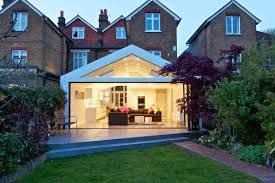Hip To Gable Roof Extension Permitted Development

The materials used in your roof extension must match as much as possible the appearance of the existing dwellinghouse.
Hip to gable roof extension permitted development. And how can a full width dormer and two hip to gables be less then 50 sq m. For an explanation of how to apply the 20cm set back condition please see pages 35 36 of permitted development for householders technical guidance see below. By comparison a gable roof is a type of roof design where two sides slope downward toward the walls and the other two sides include walls that extend from the bottom of. You re in luck planning permission isn t usually required for a standard hip to gable loft conversion.
The roof enlargement cannot overhang the outer face of the wall of the original house. So current volume is 10 10 2 2 2 additional volume created by just doing hip to gable on both sides is 10 10 2 2 3 10 10 2 2 2 36 66 m what am i missing. A hip roof or hipped roof is a type of roof design where all roof sides slope downward toward the walls where the walls of the house sit under the eaves on each side of the roof. The key issue was whether the proposed hip to gable extension would be contrary to class b part b 1 b which states that development is not permitted by class b if any part of the dwellinghouse would as a result of the works extend beyond the plane of any existing roof slope which forms the principal elevation of the dwellinghouse and fronts a highway.
These rights do allow you to extend your house without the need of planning permission as long strict planning permission guidelines are followed. Gable roof in a nutshell. This means nonetheless that you need to have your planning drawings ready to apply for a certificate of lawfulness col. Cubic volume of hip to gable roof excluding rear dormer its a triangle right.
Introduced in 2008 permitted development affords property owners the right to make certain structural alterations without permission from the local authority. Since 2008 it is not normally necessary to get planning permission to create a typical hip to gable loft extension. However it s always worth contacting your local authority to check what its planning policy dictates and how that will affect your planned extension as some. In 2008 laws were brought in to allow homeowners in the uk to conduct a small amount of development or extension work known as permitted developments to their property without notifying their local authority.
Generally speaking hip to gable loft extensions are within permitted development rights. Other than for hip to gable enlargements any roof extension must be at least 20cm from the eaves of the existing roof. For an explanation of how to apply the. The roof extension cannot be higher than the highest part of the existing roof.
This is due to a handy piece of legislation known as permitted development. The roof enlargement cannot overhang the outer face of the wall of the original house. This certificate is for you to ensure that the conversion is lawful under permitted development. Roof extensions apart from hip to gable ones to be set back as far as is practicable at least 20cm from the original eaves.














































